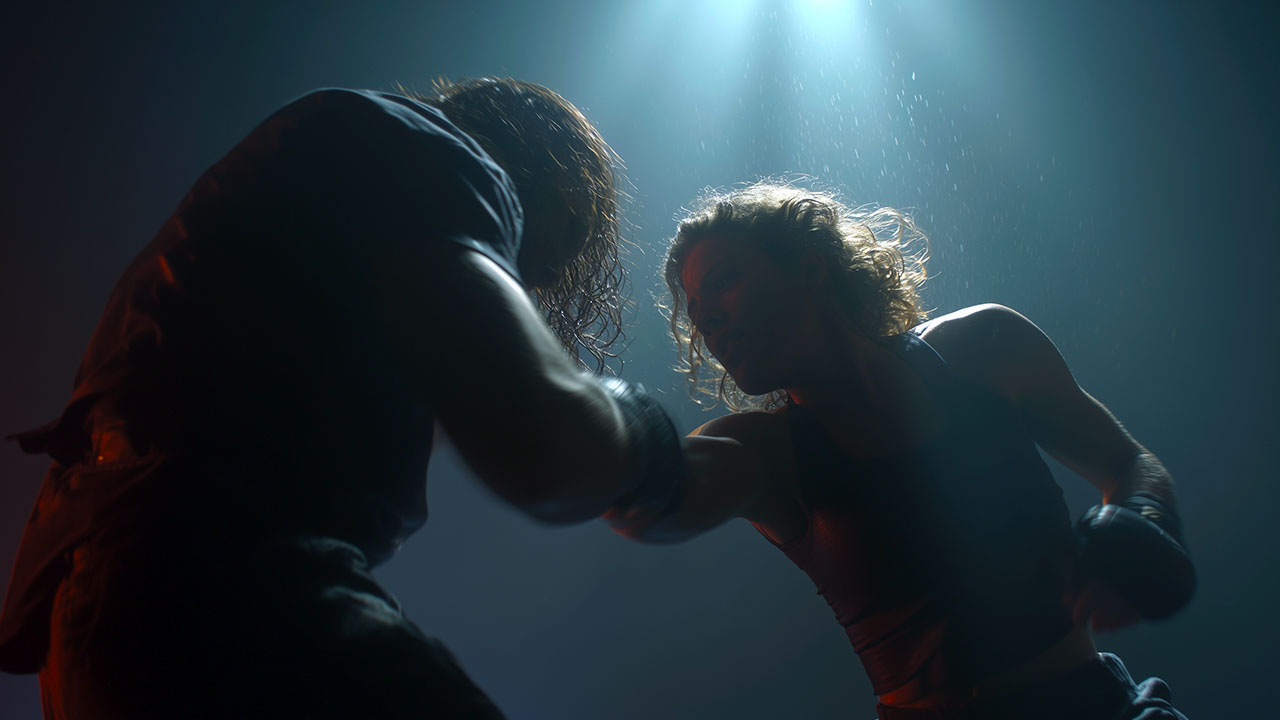
Fight scenes live and die by their sound. A punch on screen is only half the story; it is the low thud of contact, the snap of fabric, the crack of bone, the gasp of breath, and the reverberation of the space that makes the moment believable. For sound designers, these scenes are masterclasses in how to combine foley, effects, and mix choices into something that feels brutally real.
We have picked five iconic fight sequences where sound design does more than decorate the visuals. It shapes the entire experience.
Neo vs Agent Smith | The Matrix (1999)
This is not just a martial arts fight, it is a clash of philosophies. The sound design reflects that. Every punch and kick lands with a weighty, almost hyper-real impact, often layered with subtle whooshes to highlight the speed and choreography. There is a clever interplay between dry, close-up combat sounds and the reverberant echoes of the subway station, which together create a convincing sense of space. Metallic elements in both the sound design and the score help to anchor the fight within the station’s industrial environment, giving scale to the action and allowing the intimate blows to sit within a much larger sonic frame. The result is a fight that feels at once personal and monumental.
Bourne vs Desh | The Bourne Ultimatum (2007)
The Bourne franchise is famous for kinetic, documentary-style fight sound, and this sequence is arguably its peak. The sound design is deliberately claustrophobic. Every grunt, wheeze, and object break is exaggerated yet tightly framed. There is an absence of score in key moments, leaving us with the raw, uncomfortable textures of flesh, fabric, and wood under strain. When Bourne slams Desh into furniture or uses a book as a weapon, the sounds are painfully tactile, reminding us that everyday objects can become deadly instruments. This realism is what makes the fight unforgettable.
Dalton vs Knox – Final Fight | Road House (2024)
In contrast to Bourne’s realism, Road House embraces the stylised violence of Hollywood brawls. Here, punches sound bigger than life: booming mid-frequency thuds mixed with sharper transients, ensuring the audience feels the hits in their chest. The final confrontation with Knox layers guttural vocalisations with a clever use of subtle early reflections, especially in the last exchanges, placing us right in the middle of the space with them. Sound design here is not about authenticity, it is about catharsis. By exaggerating the violence, the designers let us share in Dalton’s release of tension.
Hotel Room Fight | Quantum of Solace (2008)
Bond’s hotel-room fight is relentless, and the sound mirrors that pace. Foley takes centre stage: shoes scraping on carpet and tiles, porcelain shattering, bodies slamming into flimsy walls. The breaking glass punctuates the chaos, while the natural reverb of the confined interior makes the sequence feel uncomfortably real, as if we are trapped in the room with them. There is a carefully calibrated dryness to many of the impacts too, stripping away cinematic polish to make the violence feel ugly and raw. The mix holds back from oversaturation, leaving dynamic space so the biggest slams feel seismic. When the struggle spills onto the balcony, the acoustic shifts. The soundscape thins, leaving a sparse, colder quality as Bond watches his enemy die. That transition from enclosed resonance to open-air minimalism is what makes the ending land so powerfully.
Reacher vs Paulie – Full Fight | Reacher Season 3 (2025)
Modern streaming series like Reacher often strike a balance between cinematic weight and grounded brutality. This fight exemplifies that approach. Paulie’s sheer size makes him a force of nature, and the sound design reflects his presence with slower, heavier transients that carry low-frequency content, almost sub-like, contrasting with Reacher’s sharper, more efficient strikes. But it is not only about fists and bodies; the props play an equal role in selling the brutality. Chairs splinter, tables give way, and the resonance of collapsing furniture punctuates the physical hits, reminding us that environment is part of the fight.
The final moments add yet another sonic texture as the fight spills underwater. Reacher’s last devastating blow to Paulie’s throat is filtered through the muffled, viscous acoustics of submersion. The sound design makes us feel the shift instantly. Violence becomes more suffocating, slower, and sonically alien. It is a striking example of how changing the acoustic context can completely transform the audience’s perception of impact.
The Craft Behind The Chaos
For sound designers, these examples highlight the different approaches to violent combat: hyper-real stylisation, tactile realism, environmental storytelling, and character-driven sonic choices. Each scene demonstrates that the sound of violence is not one-size-fits-all. It is a palette of textures, rhythms, and dynamics tailored to the story being told.
It is scenes like these that inspired us to create VIOLENT COMBAT, our dedicated sound effects library built for professionals working in film, TV, and games. Project lead David Philipp and the BOOM team spent weeks in the studio punching, kicking, tearing cloth and smashing fruit, capturing not just impacts but the weight, resonance and mess that make them convincing. Contact mics, resonating chambers and physical performance gave the recordings a body you cannot fake with EQ or compression.
The result is a library that goes beyond generic hits. Four categories; Martial Arts, Over The Top, Grounded and Gory, give you immediate stylistic choices, whether you need stylised kung fu cracks, cinematic exaggeration, documentary realism, or full-on gore.
And like all great combat sounds, these go further than fists. They sweeten gunshots, give creatures bite, toughen footsteps, or add grit to vehicles.
Check out VIOLENT COMBAT and hear the library in action here.




